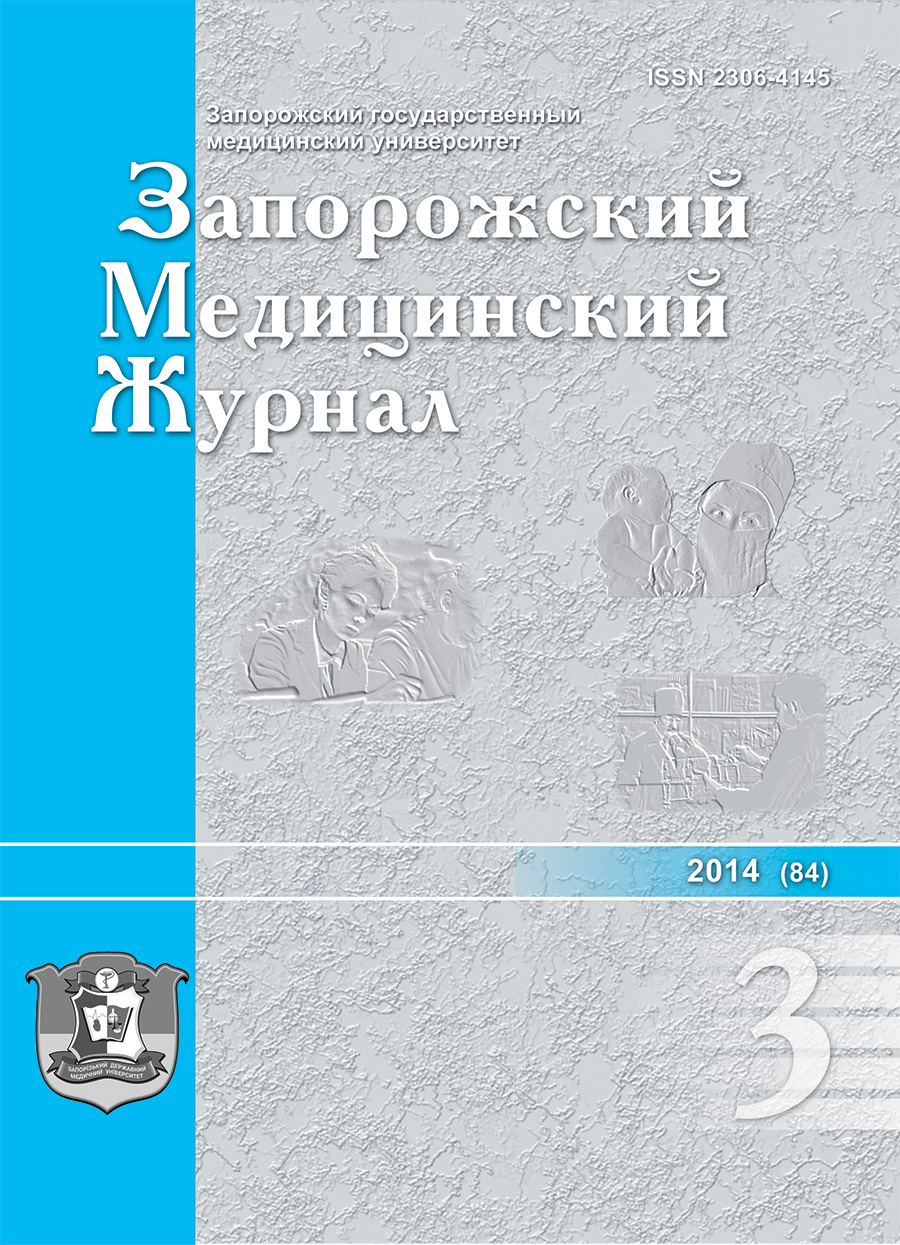State of cerebral venous hemodynamics in patients with chronic cerebral ischemia and its correction
DOI:
https://doi.org/10.14739/2310-1210.2014.3.25703Keywords:
Cerebrovascular Disordes, Cerebral Hemodynamics, Cerebral Veins, DiosminAbstract
Aim.Relevance of the study of cerebrovascular disease is caused by its high incidence and severity of complications.
Methods and results. In order to improve the diagnostic and therapeutic arrangement 86 patients with circulatory encephalopathy (DE ) II stage were examined. 62 of them were sick with dyscirculatory encephalopathy (DE) II stage. They were divided in two groups by the way of treatment mode. Namely, treatment mode with using of L-arginine in the main set and without using it in the control set. The study of cerebral hemodynamics of the patients was carried through the duplex scanning of extra- and intracranial arteries.
Conclusion. The findings suggest that patients with ED II after treatment with L-lysine aescinate and diosmin had a significant improvement in cerebral venous hemodynamics and subjective better feelings.
References
Belova, L. А. (2010) Venous Cerebral Discirculation at Chronic Cerebral Ischemia: Clinics, Diagnostics, Treatment. Nevrologicheskij vestnik im.
V. M. Bekhtereva, 42(2), 62–67. [in Russian].
Ivanov, A. J., Panuntsev, V. S., Коndratjev, А. N., Ivanova, N. Е., Petrov, А. Е., Коmkov, D. J., et al. (2010) Osobennosti venoznogo ottoka ot golovnogo mozga [Peculiarities of venous drainage of brain] Nevrologicheskij vestnik im.
V. M. Bekhtereva, 42(2), 5–10. [in Russian].
Lelyuk, V. H., & Lelyuk, S. Е. (2007). Ultrazvukovaya angiologiya.[Ultrasonic Angiology] Moscow: Real'noe Vremia. [in Russian].
Malyarova, E. Yu., Bogolepova, E. A., Abalmasov, V. H., Lelyuk, S. E., Lelyuk, V. H. (2010) Cerebral'nyj venoznyj krovotok (obzor literatury) [Cerebral venous blood flow (literature review)]. Angiologia.ru., 1, 51–60. [in Russian].
Mischenko, T. S., & Zdesenko, I. V. (2013) Terapevticheskie vozmozhnosti korrekcii venoznykh narushenij pri discirkulyatornoj e`ncefalopatii [Therapeutic Opportunities for Venous Disorders in Dyscirculatory Encephalopathy] Mezhdunarodnyj nevrologicheskij zhurnal, 2(56), 141–146. [in Russian].
Nikitin, Yu. M., Belova, L. A., Mashin, V. V., Belov, V. G., Niyazova, R. M. & Lopatko, D. N. (2011) Venoznaya gemodinamika golovnogo mozga u bol'nykh s gipertonicheskoj e`ncefalopatiej (kliniko-ul'trazvukovoe issledovanie) [Venous hemodynamics of the brain in patients with hypertensive encephalopathy (clinical and ultrasound)]. Klinicheskaya fiziologiya krovoobrashheniya, 4, 49–54. [in Russian].
Suslina, Z. A., Varakin, Yu. Ya., & Vereshhain, N. V. (2009). Sosudistye zabolevaniya golovnogo mozga [Vascular disease of the brain.] Moscow: MEDpress-ynform. [in Russian].
Khobzei, M. K., Zinchenko, O. M., Holubchykov, M. V., & Mishhenko, T. S.(2012) Stan nevrolohichnoi sluzhby Ukrainy v 2011 rotsi [State of neurological services in Ukraine in 2011.] Kharkiv. [in Ukrainian].
Chernij, T. V., Andronova, I. A., Chernij, V. I., & Gorodnik, G. A. (2010) Issledovanie e`ffektivnosti preparata L-lizina e`scinat v kompleksnom lechenii tyazheloj cherepno-mozgovoj travmy i ishemicheskogo insul'ta [Study of the efficacy of the drug L-lysine aescinat in complex treatment of severe traumatic brain injury and ischemic stroke]. Mezhdunarodnyj nevrologicheskij zhurnal, 1(531), 58–64. [in Russian].
Zamboni, P., Galeotti, R., Menegatti, E., Malagoni, A.M., Gianesini, S., Bartolomei, I., et al. (2009) A prospective open-label study of endovascular treatment of chronic cerebrospinal venous insufficiency. J Vasc Surg, 50(6), 1348–1358. doi: 10.1016/j.jvs.2009.07.096.
Downloads
How to Cite
Issue
Section
License
Authors who publish with this journal agree to the following terms:
Authors retain copyright and grant the journal right of first publication with the work simultaneously licensed under a Creative Commons Attribution License that allows others to share the work with an acknowledgement of the work's authorship and initial publication in this journal. 
Authors are able to enter into separate, additional contractual arrangements for the non-exclusive distribution of the journal's published version of the work (e.g., post it to an institutional repository or publish it in a book), with an acknowledgement of its initial publication in this journal.
Authors are permitted and encouraged to post their work online (e.g., in institutional repositories or on their website) prior to and during the submission process, as it can lead to productive exchanges, as well as earlier and greater citation of published work (See The Effect of Open Access)





